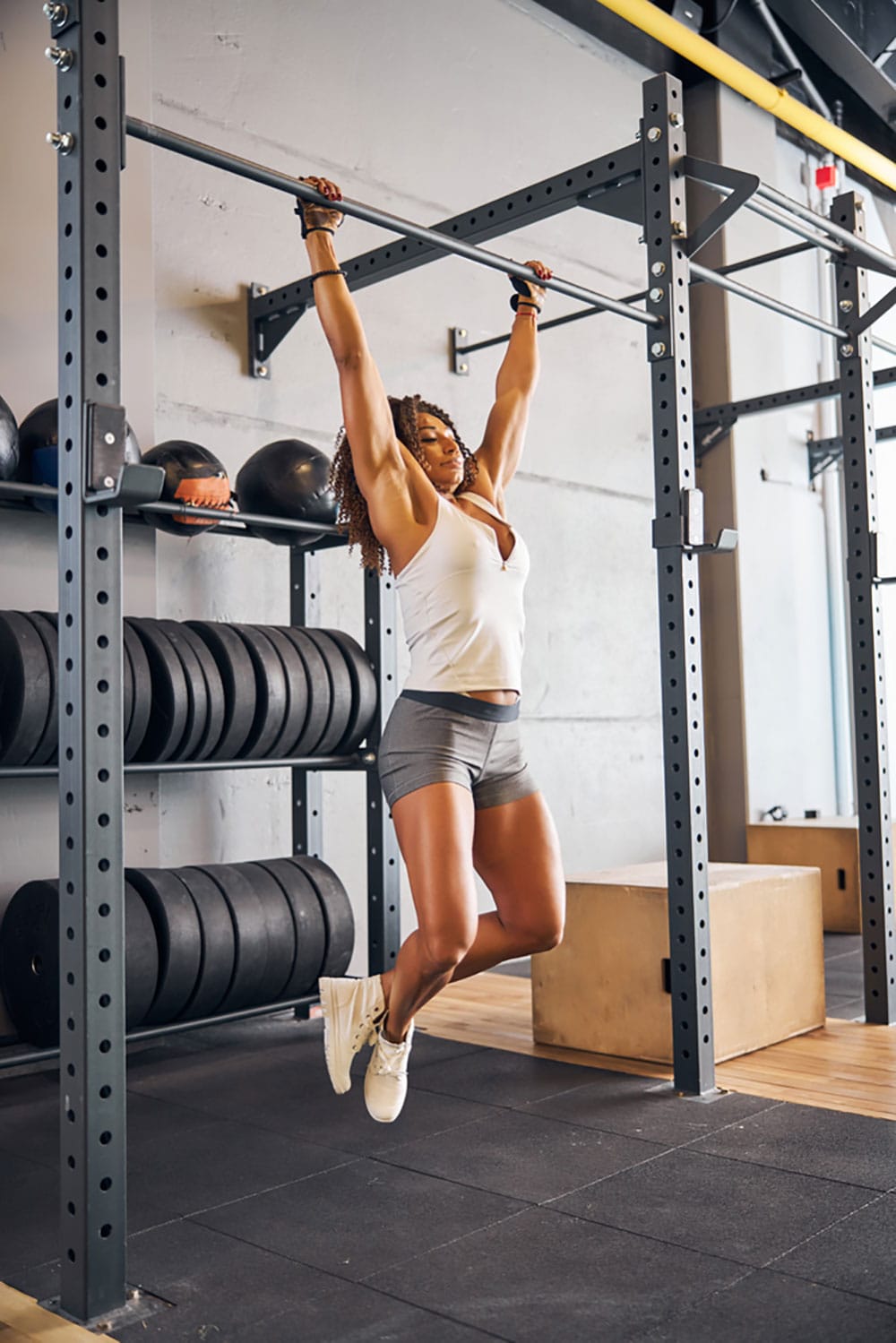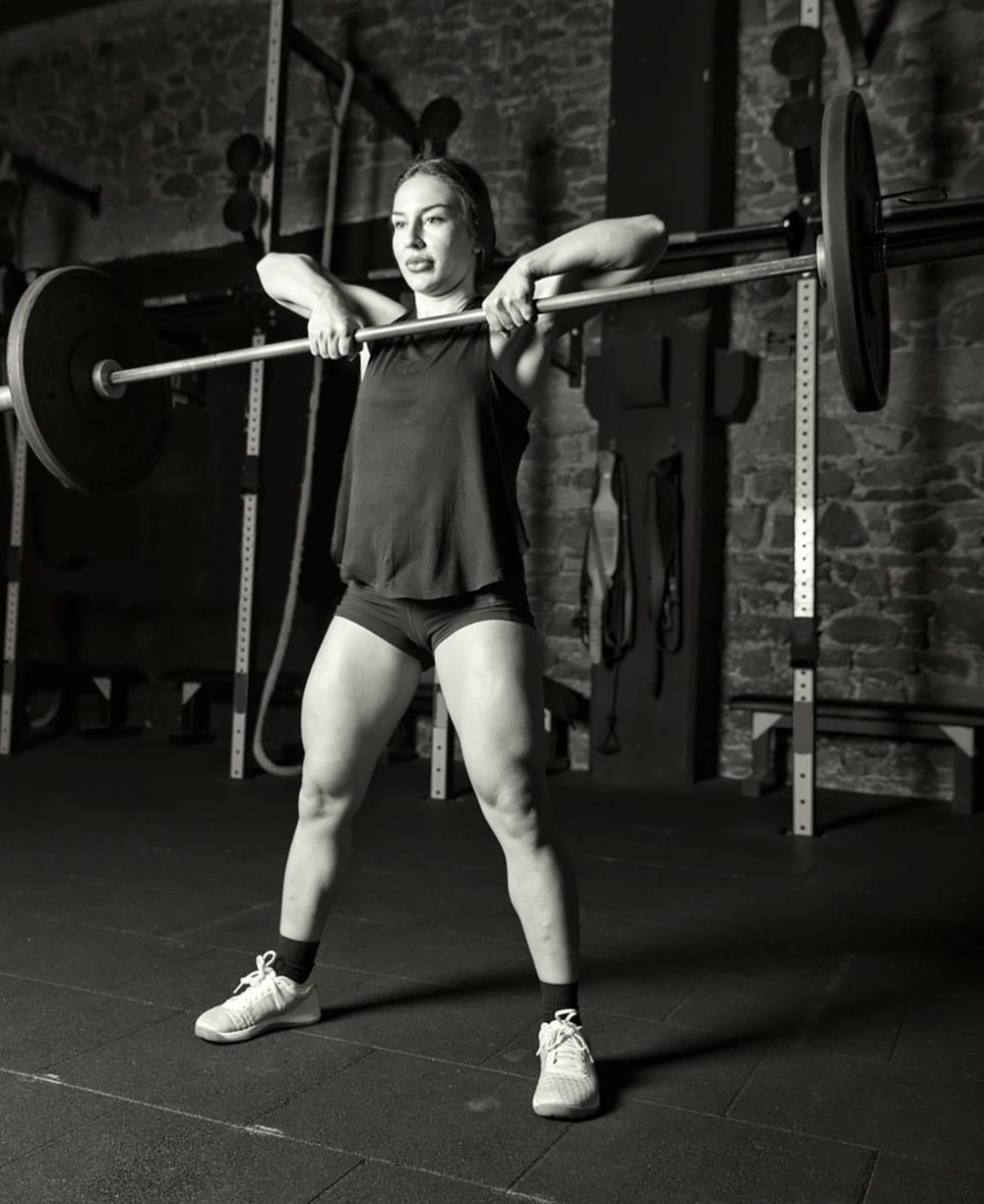Vertical Pull Exercises: Top 6 Moves for Back + Lats
Learn how to grow your back and lats with vertical pull exercises. Work through beginner to advanced variations.
If you train anything from a bro split workout plan to push-pull-legs, you’ve likely incorporated some vertical pull exercises into your back training.
These are the moves that will help you get strong lats quickly and efficiently. In this article, we’ll review how vertical pulls differ from horizontal pulls.
You’ll get an overview of the different muscles groups that vertical pull exercises typically work. Plus, we’ll walk you through 6 of the best vertical pull exercises.
This guide’s got everything you need, from beginner to advanced vertical pull moves.
What’s the difference between horizontal pull exercises and vertical pull exercises?
In many sports, especially rock climbing, you use vertical pulls. In fact, in any activity where you have to pull yourself up from the ground or a “down” position, you are pulling yourself up vertically.
This takes a lot of muscular effort.
The ability to pull directly affects sport performance during training among climbers. It factors into weightlifting, Spartan race, and numerous other athletic feats.
Let’s take a look at what goes on in your body when you perform a vertical pull movement.
Vertical pull moves typically target your lats, while horizontal pull exercises target the latissimus dorsi (“lats”) and trapezius muscles (“traps”).
The names reveal how the exercises require your body to move. Vertical pull moves mean pulling your body up from a down position, while horizontal pull exercises mean pulling your body across space.
Take a look at an exercise like the bent-over row. Here it is.

Although technically the angle your’re pulling at is more diagonal than horizontal, your body needs to bend horizontally to pull your weight.
Compare this to something like a lat pulldown (keep reading for tips on how to do this!).
Let’s have a look at it.

You can see that his upper body is positioned in a way where the weight will move straight up and down along a vertical axis.
Vertical pull moves can be great upper back or mid back exercises during your pull day workouts.
If you experience low back pain, too, they may help you feel less sore and improve your posture.
Vertical Pull Exercises— Muscles Worked
Latissimus Dorsi
Your lats help you move your arms and shoulders. Connecting to the back, the latissimus dorsi are some of the biggest muscles in your body. In verical pulls, these huge muscles drive the majority of your movement.
Rhomboids
The rhomboids retract, raise, and rotate your shoulder blades (scapulae). They play an assisting role in many vertical pull exercises.
Core
The abdominal muscles of your core are your primary stabilizers and help keep upper and lower body movement connected. In bodyweight vertical pull exercises like pull-ups and chin-ups, your core muscles keep you stable which you’re hanging in the air.
Forearms
The forearms help you move your wrists and hands. These help you keep your movements stable and controlled and also regulate exercises that require a lot of grip strength.
Biceps
Your biceps help you flex your elbows. They also allow your arms to rotate. Vertical pull moves like chin-ups for biceps can incorporate a lot of activation from these upper arm muscles.
Deltoids
Vertical pull moves where you lift your arms will hit your anterior deltoids (“front delts”). These muscles on the front of your shoulders help you stabilize your shoulders and maintain your posture. Read the linked article to learn more about front delt workouts.
Best Vertical Pull Exercises
Chin-Ups
- Set-Up: Grasp the Bar: Stand beneath it and fully extend your arms to reach it. Take an underhand grip with your hands shoulder-width apart.
- Body Position: Stick your chest out and keep your shoulders pulled down. Bend your knees and cross your lower legs if this feels more comfortable for you.
- Pull-Up: Bend your elbows and pull up through your back muscles. Pull your body towards the bar and work to get your chin above it. Try to keep your elbows close to the body.
- Reverse: Lower your body after reaching the bar and holding the position for a few moments. Slowly lower until your arms are fully extended again. This makes one full rep.
- Reps: Start with 3 sets of 3-8 reps if you are new. You can also anchor a resistance band around your chin up bar. Tuck your knee or foot through the band and use it to take some weight out of this lift if you find it too difficult.
Pull-Ups
These are the gold standard when it comes to vertical pull exercises.
Pull-ups are a bodyweight move that showcase the ultimate test of strength. What makes pull-ups so powerful?
This exercise requires you to lift 100% of your body weight.
Compare that to push-ups (also incredibly challenging!) where you’re only lifting around 65% of your weight. Pull-ups are physically demanding and mentally challenging.
To do a pull-up:
- Set-Up: Find a pull-up bar.
- Grip: Lift your arms and twist your palms outward to face away from you. Grasp the bar firmly. Brace your core muscles with your arms extended.
- Activation: Driving out of your back and shoulders, bend your elbows and activate your forearms to lift your body up and off the ground.
- Elevation: Keep your chest proud. Continue to follow through the movement until your chin comes over the bar.
- Descent: Hold this position for a moment at the top. Next, slowly start to extend your elbows and lower your body back down to the starting position.
- Reps: Start with 3 sets of 3-8 reps if you are new.
Be careful here not to drop or dump into your shoulders. If you don't control the movement here, you risk shoulder injuries on the eccentric (the “down”) part of the move.
Band Assisted Pull-Ups

- Set-Up: Find a pull-up bar. Tie a resistance band around the middle of your bar. The weight written on the band will reduce your load by that amount. So say you weight 150 lbs and choose a 50 lb resistance band, you would be pulling 100 lbs. Hook your foot or knee through the loop of the band. Which you choose depends on your personal preference.
- Grip: Lift your arms and twist your palms outward to face away from you. Grasp the bar firmly. Brace your core muscles with your arms extended.
- Activation: Driving out of your back and shoulders, bend your elbows and activate your forearms to lift your body up and off the ground. Keep your body in a straight position as you come up and don’t let yourself swing in the air.
- Elevation: Keep your chest proud. Continue to follow through the movement until your chin comes over the bar.
- Descent: Hold this position for a moment at the top. Next, slowly start to extend your elbows and lower your body back down to the starting position.
- Reps: Since this move is easier than a full pull-up, aim for 3 sets of 8-12 reps.
Pull-ups aren’t accessible to many people, so the band assisted version is a fantastic alternative. Continue to train at this version until you build up strength.
Once you feel comfortable with a certain resistance level, reduce your band size to add more weight into your lift. You may eventually be able to work towards skipping the band entirely.
Seated Lat Pulldown
The lat pulldown is one of the most effective exercises you can use to strengthen and grow your back muscles.
This seated vertical pull move is a great option if you want to skip the bodyweight exercises.
- Set-Up: Load your desired weight onto a lat pulldown machine.
- Body Position: Place your feet in the footholds on either side of the bench and sit down. Grab the bar attachment with an overhand grip, keeping your wrists straight and engaged.
- Pulldown: Brace your core and pull down, driving this movement from your back to bring the bar handle to hover over your chest.
- Reverse: Slowly and with control, reverse the movement, letting your arms straighten back out and bring the bar to its original position.
- Reps: 4 sets of 8-12 reps.
Scapular Pull-Ups

This is one of the best progressions to a pull-up that you can also train.
One major area where people lack in their pull-ups is scapular activation and getting the shoulder blades to retract (pull down and in) as you pull-up.
Many people simply don’t get this mind-body connection and it makes the work of getting into t a pull-up much more difficult than it needs to be.
To work on scapular pull-ups:
- Set-Up: grab a pull-up bar with your hands wider than shoulder-width in an overhand grip (palms facing away from you).
- Body Position: Come to a dead hang where you are simply supporting your body weight on the bar with no movement.
- Action: Retract your shoulder blades by bringing them down and in toward each other. This movement should raise your chest and body up slightly. Don’t bend your elbows at all like you would in a regular pull-up, just move from the shoulder blades and chest.
- Reverse: Hold for a moment, squeezing your shoulder blades together, then slowly reset them to come back to the starting position.
- Reps: Work on this move for 3-4 sets of 6-12 reps.
High Pulls

The high pull is a unique and dynamic move.
It’s somewhat like a hybrid between a power clean, which we see in Olympic lifting, and an upright row.
This move involces most of your major muscle groups.
It works along the muscles of your posterior chain, like the glutes, back and hamstrings. These muscles help stabilize the active movement.
You’re also working your upper, middle and lower traps at the same time. This lets you get even activation along your trapezius muscles and can help with posture.
To high pull:
- Set-Up: Stand straight with your feet hip-width apart. You can choose to do this lift with a barbell or dumbbells. Whatever your preference, hold your weight with your hands hanging down in front of your thighs. For the sake of this description, we’ll go through the variation using a barbell.
- Grip and Body Position: Use an overhand, medium-width grip on your barbell.
- Pull: Explosively push your hips backward, send your hips back and slightly bend your knees, then drive through your feet and ankles, rising slightly onto your tip toes to pull the barbell up as high as you can. Shrug your shoulders up at the top of the move to get your weight even higher. Try to send your elbows out to the sides with an exaggerated elbow flare for full range of motion.
- Reverse: Bring your weight down quickly and repeat for reps.
- Reps: Aim for 3 sets of 5-10 reps, depending on whether you prefer a light or heavy weight.
The takeaway
Like their horizontal counterparts, vertical pulls are some of the greatest moves for building a bit back.
The difference?
Vertical pull moves absolutely hammer your lats. Horizontal pulls will usually target both your lats and traps. If you want to grow your back, both are essential.
But the vertical pull exercises give you a lot of room to play around with body weight exercises. They also offer many variations, so you can scale the difficulty up or down as you need.
Remember to always refuel after your workouts. Post-workout, make sure you try to get in:
- A serving of lean protein
- A proper stretch
- A good nights sleep
- A tall glass of water
These simple factors will make sure you’re optimizing the strength gains from your workouts, building your muscles up to be the healthiest they can be.
References
Padulo, J., Laffaye, G., Chamari, K., & Concu, A. (2013). Concentric and eccentric: muscle contraction or exercise?. Sports health, 5(4), 306. https://doi.org/10.1177/1941738113491386
Vigouroux, L., & Devise, M. (2024). Pull-Up Performance Is Affected Differently by the Muscle Contraction Regimens Practiced during Training among Climbers. Bioengineering (Basel, Switzerland), 11(1), 85. https://doi.org/10.3390/bioengineering11010085
Related articles


Get fit with Flex
Build muscle & lose weight fast for free.
Available on iPhone + Apple Watch





